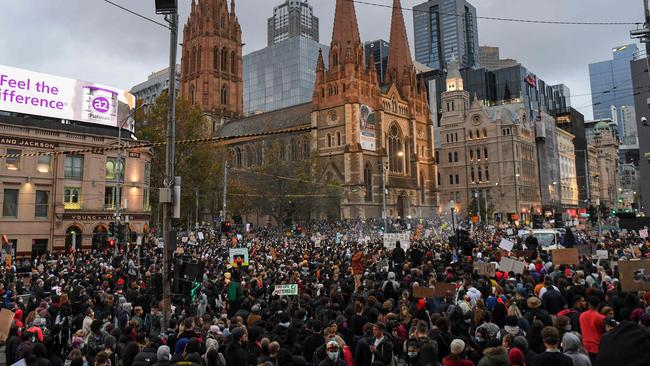Victoria becomes the biggest loser in coronavirus crisis prevention
Complacency at the relatively low rate of infection and death over the entire country has led to this.

So how did this happen? The pat answer from Daniel Andrews has been “large family gatherings”, although rumours of quarantined returnees fraternising too freely with the quarantine guards is the one that has captured the vulgar imagination. You would laugh if it weren’t so serious.
What isn’t too comic is the complacency that seems to have taken hold during this pandemic. Not just complacency from the citizens of Melbourne; it is generalised. However, the level of complacency from the Victorian government and the bureaucracy of its health department is almost breathtaking. Infections in Victoria have been rising since last month and the rate of infection went from 0.34 on June 30 to as high as 0.72 in a week before declaring another lockdown. Meanwhile, with restrictions loosened, the virus was taking hold in various hot spots.
But even before the government had relaxed restrictions in Victoria there was an element of “breakout”. So while most of urban Australia was confined to gatherings of no more than 20, thousands of mostly young people went out into the streets of Melbourne and other cities to demonstrate that Black Lives Matter. They seem to forget that all lives matter, especially in a pandemic, and that the public display of 30,000 people “breaking out” had an exponential effect on the public attitude if not directly on coronavirus infections.
It was a breaking of the public trust, a stronger resentment when people couldn’t go to church, funerals were restricted and visits to elderly relatives in nursing homes were restricted or not allowed. As well, people coming from abroad are supposed to be quarantined, yet in Melbourne a reported 30 per cent of people in one quarantine hotel have refused to be tested. What is one to make of this? What of the health authorities in a state unable to enforce compulsory testing? We have compulsory breath testing for road safety, it is compulsory to agree to a body scan at an airport, yet for some reason the government of Victoria can’t make testing for COVID-19 compulsory.
Julian Rait, now the president of AMA Victoria and an associate professor at the University of Melbourne, wrote an essay 30 years ago on the Spanish flu epidemic in Australia that analysed the errors made in 1919-20. It has influenced Australia’s response to the current epidemic, with Health Minister Greg Hunt and the Prime Minister using the essay as a resource to model their response to the COVID-19 pandemic.
One of Rait’s key findings about the failures in handling the Spanish flu was a breakdown in federal relations and the lack of a single authoritative medical voice to direct the public health response.
According to Rait, Victoria’s lack of preparedness for this pandemic is partly the result of the downgrading of public health and, subsequently, the role of the chief health officer in Victoria. “The department of health is not well structured and consequently public health has had a low priority for some time … The chief health officer has far less authority in Victoria than in other states. He is not at departmental secretary rank and can’t counteract the advice of bureaucrats.” So he doesn’t have greater control over, for example, distancing measures, or apparently compulsory testing.
In 1919 the biggest failure was the piecemeal response in the new federation and the lack of a nationwide quarantine that caused the spread of infection. During the royal commission that followed the pandemic Victoria came under harsh criticism for its attempts to downplay the epidemic.
However, there is no doubt we are doing much better than in 1919, and not just because of better health and hygiene. In 1919 the death rate among the remote Aboriginal population was 50 per cent. Now there are no infections among indigenous people living in remote eras.
Victoria is certainly in a mess of its own making. However, despite border closures and dire warnings from Gladys Berejiklian, NSW has nothing to be complacent about either after a plane-load of people from Melbourne alighted in Sydney Airport but were not tested. Complacency at the relatively low rate of infection and death over the entire country has led to this.
The past is catching up to us and it could start looking more and more like 1919.




Scott Morrison’s latest rallying cry “we are all Melburnians now” might be resented a little in some quarters — even in Melbourne. Having now gone into a second lockdown, the citizens of that city have a right to be confused and angry, since the vast majority have obeyed the rules and have avoided infection.